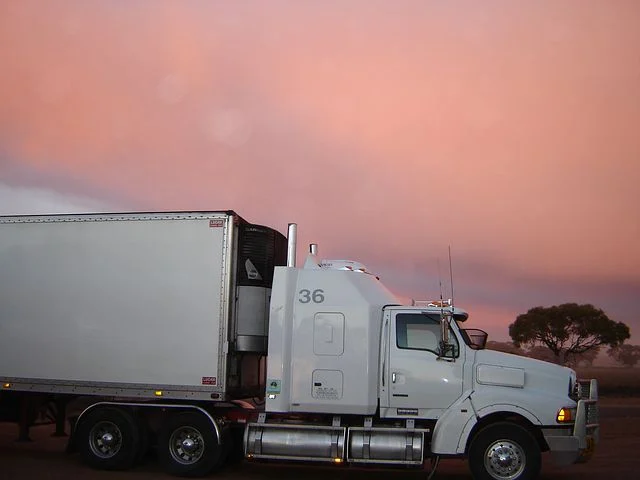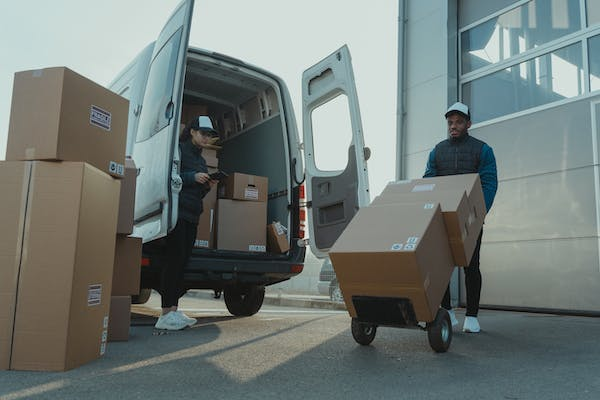When outside temperatures drop below freezing – as they do for several months of the year in much of the country – you need to take extra steps to make sure your freight shipments don’t freeze. Lots of consumer goods can’t withstand freezing temperatures – beverages are a clear example, because they can expand and burst their containers if allowed to freeze. But you might be surprised to learn that all sorts of wet and dry goods shouldn’t be allowed to freeze. Coffee, flour, cosmetics, paint, and batteries all make the list.
You don’t need to wait until it’s warm again to ship your temperature-sensitive freight. To protect freight from freezing in the winter, make sure it’s properly packaged. Use a temperature-controlled truck, and make sure freight gets kept in a heated warehouse in between trucks. Monitor the temperature of your freight throughout transit, so you can step in and make changes if they’re necessary to protect your freight from freezing.
Package Freight to Keep It Above Freezing
No matter what kind of freight you’re shipping, it’s important that you package it properly to keep it above freezing as it makes its way to its destination. Plastic molded boxes are ideal for shipping soft foods like fruit and tomatoes, and they can be stacked on a truck with little risk of damaging the freight contents. Since protect-from-freeze (PFF) shipments are often perishable, it’s best to get as much freight onto the truck as you can at one time.
Styrofoam is also perfect for insulating your shipments, as it can keep goods from freezing as well as it can keep them from getting too warm. Packing your perishable goods in styrofoam containers with gel packs can keep them cool without allowing them to freeze, which is ideal for shipments of fruit and vegetables, live seafood, dairy, cheese, chocolate, and other items that shouldn’t be allowed to freeze. Most shipments that must be protected from freezing must also be protected from getting too hot, and gel packs are perfect for keeping shipping contents at a consistent temperature of 40 to 60 degrees Fahrenheit – which can be important in areas where the temperature can swing drastically over the course of a single day.
There are many types of insulation you can choose to keep your shipments from getting so cold that they freeze. You can buy thermal blankets and pallet covers to keep shipments from freezing when they might otherwise be exposed to the elements. Thermal bubble wrap, thermal carton liners, and styrofoam planks can all keep your freight above freezing.
Use Temperature-Controlled Shipping
Temperature-controlled shipping is essential for keeping freight above freezing in the winter. Freight that can’t be allowed to freeze should be shipped on heated trucks or in heated containers; conversely, refrigerated trucks are also effective for keeping freight above freezing. A refrigerated truck is temperature-controlled just like a heated one, and might be the appropriate choice to keep many goods, like dairy, fruit, tomatoes, and live seafood, at appropriate temperatures throughout its journey.

When shipping items that should be protected from freezing, you should plan a route that keeps goods out of freeze zones as much as possible. Of course, depending on where you’re located, it might not be possible to send your freight through only high temperature areas – and it’s important to keep in mind that high temperatures can be just as damaging to some kinds of freight as cold ones. Ensure that loads are moved as quickly as possible, and make sure that you consider the temperature across the entire route when planning to protect your freight from extreme temperatures. On some routes, your freight may encounter freezing and hot temperatures on the same day.
Monitor Your Freight’s Temperature Throughout Shipping
Extreme swings in temperature are just one reason why it’s important to monitor the temperature of your freight in transit with freeze indicators. Freeze indicators will let you know in real time if your freight is in danger of dropping below freezing temperatures, so you can make changes to your route or shipping methods on the fly to protect it.
Freeze indicators are just as important as impact recorders to getting your freight to its destination in good shape. Make sure your carrier is on the same page as you regarding protect-from-freeze measures and contingency plans, because freight damaged by freezing takes money out of your pocket.
This winter, you can’t afford to let your freight freeze in transit. Protect your temperature-sensitive freight with the right insulation, temperature-controlled shipping, and freeze indicators, so you can meet your customers’ needs all winter long.














